Re-evaluating the roles of myosin 18Aα and F-actin in determining Golgi morphology
- PMID: 28329908
- PMCID: PMC8579491
- DOI: 10.1002/cm.21364
Re-evaluating the roles of myosin 18Aα and F-actin in determining Golgi morphology
Abstract
The peri-centrosomal localization and morphology of the Golgi apparatus depends largely on the microtubule cytoskeleton and the microtubule motor protein dynein. Recent studies proposed that myosin 18Aα (M18Aα) also contributes to Golgi morphology by binding the Golgi protein GOLPH3 and walking along adjacent actin filaments to stretch the Golgi into its classic ribbon structure. Biochemical analyses have shown, however, that M18A is not an actin-activated ATPase and lacks motor activity. Our goal, therefore, was to define the precise molecular mechanism by which M18Aα determines Golgi morphology. We show that purified M18Aα remains inactive in the presence of GOLPH3, arguing against the Golgi-specific activation of the myosin. Using M18A-specific antibodies and expression of GFP-tagged M18Aα, we find no evidence that it localizes to the Golgi. Moreover, several cell lines with reduced or eliminated M18Aα expression exhibited normal Golgi morphology. Interestingly, actin filament disassembly resulted in a marked reduction in lateral stretching of the Golgi in both control and M18Aα-deficient cells. Importantly, this reduction was accompanied by an expansion of the Golgi in the vertical direction, vertical movement of the centrosome, and increases in the height of both the nucleus and the cell. Collectively, our data indicate that M18Aα does not localize to the Golgi or play a significant role in determining its morphology, and suggest that global F-actin disassembly alters Golgi morphology indirectly by altering cell shape.
Keywords: Golgi; actin; microtubule organizing center; myosin 18A.
© 2017 Wiley Periodicals, Inc.
Figures
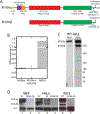
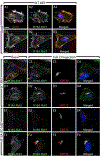
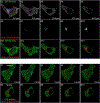
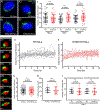
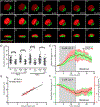

Similar articles
-
GOLPH3 bridges phosphatidylinositol-4- phosphate and actomyosin to stretch and shape the Golgi to promote budding.Cell. 2009 Oct 16;139(2):337-51. doi: 10.1016/j.cell.2009.07.052. Cell. 2009. PMID: 19837035 Free PMC article.
-
Mammalian myosin-18A, a highly divergent myosin.J Biol Chem. 2013 Mar 29;288(13):9532-48. doi: 10.1074/jbc.M112.441238. Epub 2013 Feb 4. J Biol Chem. 2013. PMID: 23382379 Free PMC article.
-
Functional characterization of human myosin-18A and its interaction with F-actin and GOLPH3.J Biol Chem. 2013 Oct 18;288(42):30029-30041. doi: 10.1074/jbc.M113.497180. Epub 2013 Aug 29. J Biol Chem. 2013. PMID: 23990465 Free PMC article.
-
Myosin XVIII.Adv Exp Med Biol. 2020;1239:421-438. doi: 10.1007/978-3-030-38062-5_19. Adv Exp Med Biol. 2020. PMID: 32451870 Review.
-
Vesicle transport: the role of actin filaments and myosin motors.Microsc Res Tech. 1999 Oct 15;47(2):93-106. doi: 10.1002/(SICI)1097-0029(19991015)47:2<93::AID-JEMT2>3.0.CO;2-P. Microsc Res Tech. 1999. PMID: 10523788 Review.
Cited by
-
Alterations of Golgi Structural Proteins and Glycosylation Defects in Cancer.Front Cell Dev Biol. 2021 May 12;9:665289. doi: 10.3389/fcell.2021.665289. eCollection 2021. Front Cell Dev Biol. 2021. PMID: 34055798 Free PMC article. Review.
-
A novel isoform of myosin 18A (Myo18Aγ) is an essential sarcomeric protein in mouse heart.J Biol Chem. 2019 May 3;294(18):7202-7218. doi: 10.1074/jbc.RA118.004560. Epub 2019 Feb 8. J Biol Chem. 2019. PMID: 30737279 Free PMC article.
-
Are the class 18 myosins Myo18A and Myo18B specialist sarcomeric proteins?Front Physiol. 2024 May 9;15:1401717. doi: 10.3389/fphys.2024.1401717. eCollection 2024. Front Physiol. 2024. PMID: 38784114 Free PMC article. Review.
-
[Impact of GOLPH3 expression in cumulus granulosa cells on outcomes of intracytoplasmic sperm injection].Nan Fang Yi Ke Da Xue Xue Bao. 2017 Oct 20;37(10):1351-1357. doi: 10.3969/j.issn.1673-4254.2017.10.11. Nan Fang Yi Ke Da Xue Xue Bao. 2017. PMID: 29070465 Free PMC article. Chinese.
-
Mammalian START-like phosphatidylinositol transfer proteins - Physiological perspectives and roles in cancer biology.Biochim Biophys Acta Mol Cell Biol Lipids. 2024 Oct;1869(7):159529. doi: 10.1016/j.bbalip.2024.159529. Epub 2024 Jun 28. Biochim Biophys Acta Mol Cell Biol Lipids. 2024. PMID: 38945251 Free PMC article. Review.
References
-
- Cao H, Weller S, Orth JD, Chen J, Huang B, Chen JL, … McNiven MA (2005). Actin and Arf1-dependent recruitment of a cortactin-dynamin complex to the Golgi regulates post-Golgi transport. Nature Cell Biology, 7, 483–492. - PubMed
-
- Chen JL, Lacomis L, Erdjument-Bromage H, Tempst P, & Stamnes M (2004). Cytosol-derived proteins are sufficient for Arp2/3 recruitment and ARF/coatomer-dependent actin polymerization on Golgi membranes. FEBS Letters, 566, 281–286. - PubMed
MeSH terms
Substances
Grants and funding
LinkOut - more resources
Full Text Sources
Other Literature Sources
Research Materials

